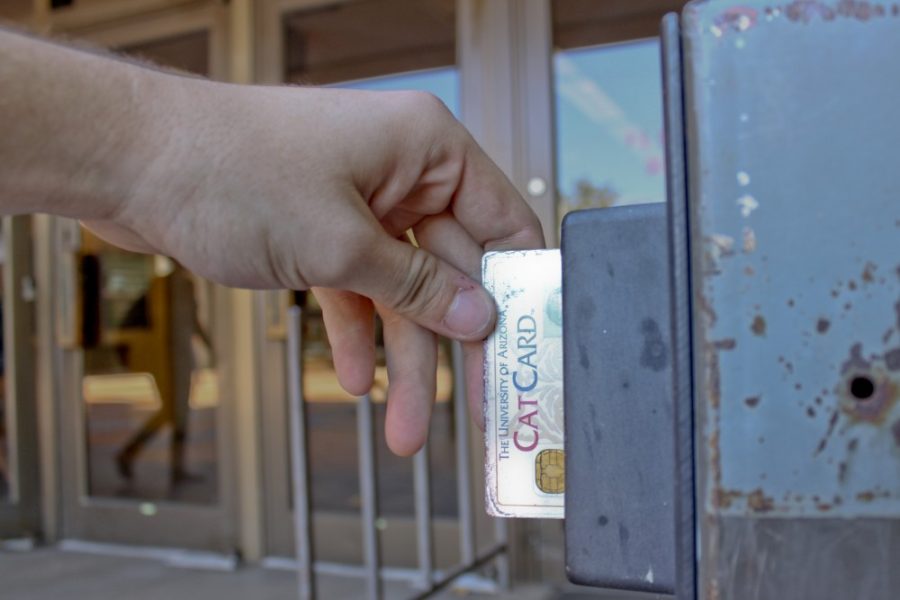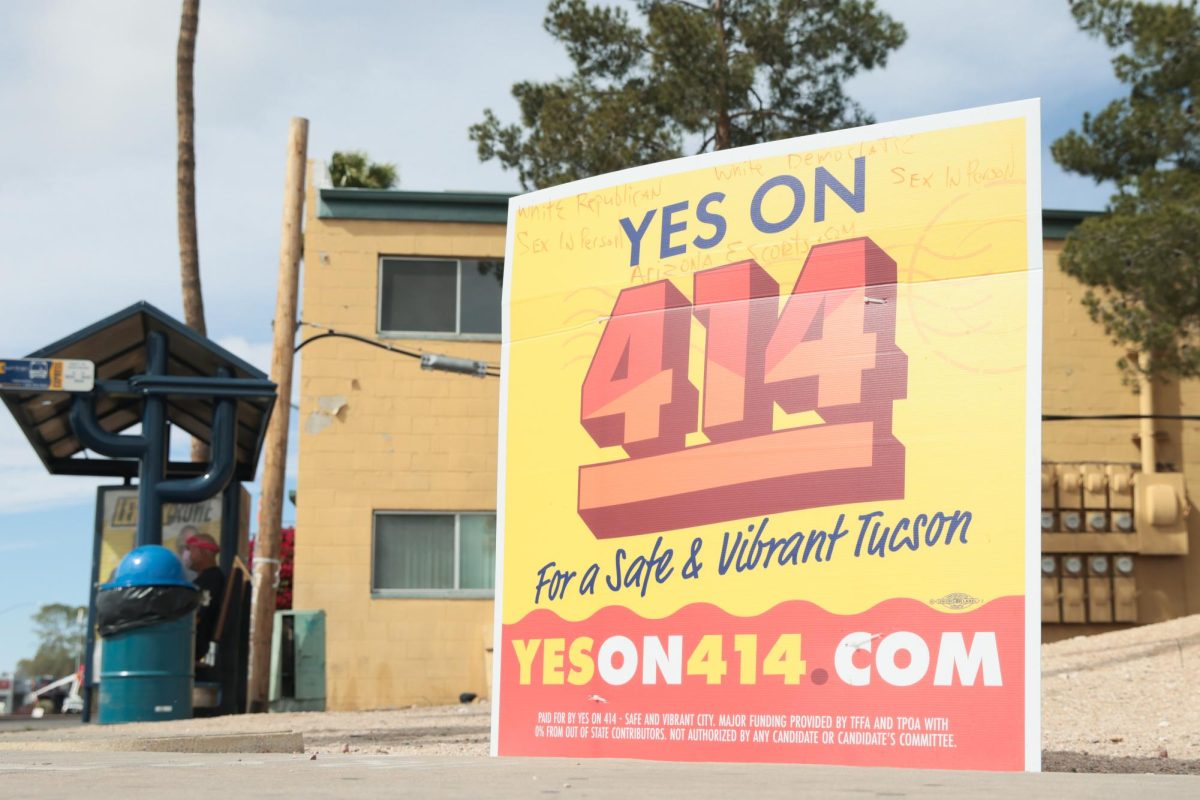Bars on University Boulevard aren’t the only places checking IDs now.
The UA Main Library has implemented a new policy that requires students who enter after 9 p.m. to not only swipe their CatCard to get through the door, but to also present their ID to a student worker before entering.
The overnight library access gives UA students a better environment for learning, research and group evaluation, said Travis Teetor, the library operations supervisor. But the new policy now ensures that only students have access to library resources. Students without a CatCard can’t be let in unless they can prove they’re a current student. They may do this by logging on to their UAccess account on the main desk computer.
A paid student worker patrols the main information desk located in front of the self check-in and check-out machines on the second floor from 9 p.m. to 7 a.m. Because the first hour of CatCard restriction tends to be the busiest, a second student worker stays to assist between 9 and 10 p.m.
The two CatCard readers are located at the front of the library, one on the left-hand set of doors and then one on the handicapped access railing to the right of the entrance. Students swipe their CatCard in the device and once the light turns green, they can open the door.
In addition to the student at the main information desk, there are at least two library staff members in the library every hour of the day.
In the first few weeks after the CatCard system started up, students from Pima Community College or online colleges still tried to access the library after 9 p.m. Some of those students were previous UA students who attempted to use their CatCards to get in, but could not because their cards are no longer activate with the university.
Despite the apparent need for the new policy, safety has never been an issue for some students.
“The library is a convenient meeting place and there’s never been a situation where I’ve felt unsafe,” said Sean Fleming, a chemistry senior.
Despite those who are irritated that they have to take out their CatCard and show it to the student worker, Spanish senior Raquel Sanchez said she does feel an increased level of safety.
“I like it because before I didn’t like how anyone could come in,” she said. “I feel more safe.”
Some students still maintain a level of caution, which could be a result of the number of transients that occasionally use library resources.
“I’ll see creepy homeless people who are on Facebook and MySpace looking at young girls,” Sanchez said. “It’s disgusting.”
According to Teetor, it’s important to report suspicious activity immediately. The library also has a chat system on its website that allows students to contact library officials from their computer or phone.
Additionally, Peetor added that the libraries and the University of Arizona Police Department have a “good working relationship,” as UAPD is sometimes called to respond to various issues.
Still, others are careful about what hours they use the library.
“I feel safe for the most part,” said Amy Phelps, a media arts junior, “but if I came at night, I’d be more cautious.”








